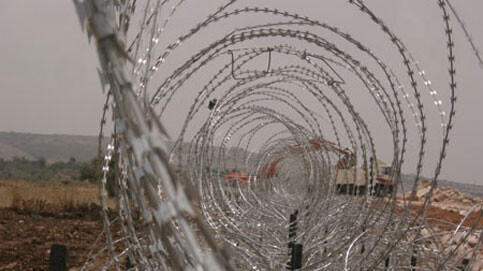UN Office for the Coordination of Humanitarian Affairs 11 October 2003

Photo: PENGON/Stop the Wall Campaign
The co-chairs of the Local Aid Coordination Committee (LACC) – the group of international donors to the Palestinians — today released a report on the rapid expansion of Israel’s “separation barrier” around East Jerusalem.
The report, The Impact of Israel’s Separation Barrier on Affected West Bank Communities: The “Jerusalem Envelope” (PDF), focuses on the economic, social and humanitarian consequences for tens of thousands of Palestinians living in the affected area. It provides detailed information on the barrier’s trajectory (with two maps) and reviews its economic and social consequences as well as the process of requisitioning land for construction.
The 35-page document is the second update of an original report released on April 30 that focused on the barrier’s alignment in the central West Bank. That report emphasized the potential impact of physical separation and isolation on residents who might be cut off from their agricultural lands, irrigation networks and water resources, as well as from workplaces, schools, health clinics and other social services. The first update, released July 30, documented the impact the barrier’s Phase II construction along the northern West Bank.

The reports are presented to the LACC’s Humanitarian and Emergency Policy Group out of concern that the barrier could harm Palestinian livelihoods and the viability of local economies and impede the delivery of donor assistance. The original report and both updates can be found on the website of the UN Office for the Coordination of Humanitarian Affairs.
Key Findings
The barrier is dividing communities and families and threatens to seal Jerusalem off from the rest of the West Bank. Palestinians along the barrier’s alignment face land loss and severely restricted access to jobs, markets, and essential social services. Among the findings:
Trajectory
Affected Population.
Impact
Response
Related Links:
For more information and to be referred to these spokespeople, please contact Mark Dennis, Senior Adviser, the Office of the United Nations Special Coordinator. cell: +972-55-627-807, email: dennism@un.org.